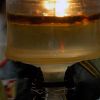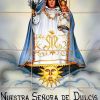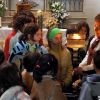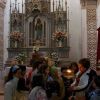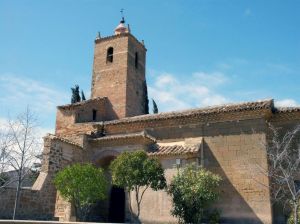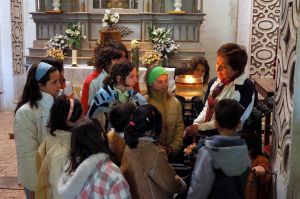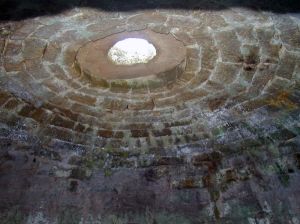Legend tells the tale of the apparition of the Virgin Mary above a honeycomb in the place where the shrine of Nuestra Señora de Dulcis now stands in her honour.
Dulcis quickly became the main pilgrimage destination of people living in the environs of the middle stretch of the River Vero attracting pilgrims from Alquézar and the surrounding hamlets (Buera, San Pelegrín, Radiquero, Asque and Colungo) Favours would be asked of the Virgin who performed miracles to those who trusted in her powers.
She cured invalids, saved men from dying of thirst when the river ran dry and freed children from terrible diseases such as scrofula (an inflammation of the glands and symptomatic of the onset of other illnesses, fatal at the time, such as tuberculosis.)
The fervour that arose at this time for the image of the Virgin of Dulcis resulted in her performing wonders for the faithful, many of which were recorded in the 18th century by Father Faci and by Tones y Abizanda;
“The miracles that Our Lady have performed are many … A pilgrim so impeded that he could hardly seek food visited the Virgin and immediately regained health and left his hat and crutch as testimony. A 12 year old girl, crippled since birth, was made healthy during the mass her parents celebrated for her. A 14 year old crippled boy, who could find no human remedy, asked his parents to take him to the Dulcis chapel, and then, when they took him to hear mass in the chapel, got up, took the missal and helped the priest throughout the rest of the mass. A soldier wanting to desecrate the holy temple of Maria, tried to enter mounted on his horse, but the animal was struck immobile outside and would not enter; so instead he was miraculously humbled, showing the Beast to be more rational than Man, and he more ignorant than his horse of the worship of the Holy Temples.” The same Tones y Abizanda tells in Lumen of the miracles that the Virgin performed for him. Firstly she freed him, and later his sister, from an infant disease of the times known as scrofula. Also, having fallen in the river and in danger of drowning he appealed to Our Lady of Dulcis who brought him out of his trance and saved him. Finally, “…When I was Prior of the said sanctuary and was convalescing from an illness, I had a pin, big like a sewing needle and with a large head, for clearing my own head. I put it up one of my nostrils and breathed it in. I called upon the Virgin Mary and it gave me no pain and did me no harm. As far as I know the pin hasn't come out.”
In times of drought it was common to take the statue of the Virgin on a procession to appeal to the skies for rain. These religious acts feature in the documentation of the shrine and were collated by an 18th century prior. “I said nothing, if it was to rain or not because of this diligence. We can believe it would rain because in all the times we have been to her house and shrine to worship her….she has saved us every time.” It was the miracles and the wonders that the Virgin performed for her most faithful devotees that brought thousands of people to this shrine every year in September. Indeed there were so many pilgrims that the villagers from Buera had to ask the bishop to change the date of the pilgrimage from September to May because the visiting people would eat grapes from vines in the fields, the only sustenance of the local people.This tradition is still alive and well and on the second Sunday of May the villagers of Alquézar and the surrounding hamlets walk to the chapel in procession to worship the statue of Our Lady of Dulcis.
In the nearby olive oil mill, known as the Torno de Buera, olive oil held in tanks was moved to narrow necked recipients for transportation using tin funnels. They were then left to drain in a sink and the oil that accumulated there was donated to the Dulcis shrine to light the Virgin’s lamp. Tradition stated that to anoint the tongues of children with oil from the lamp that burnt next to the altar would help them to talk.



